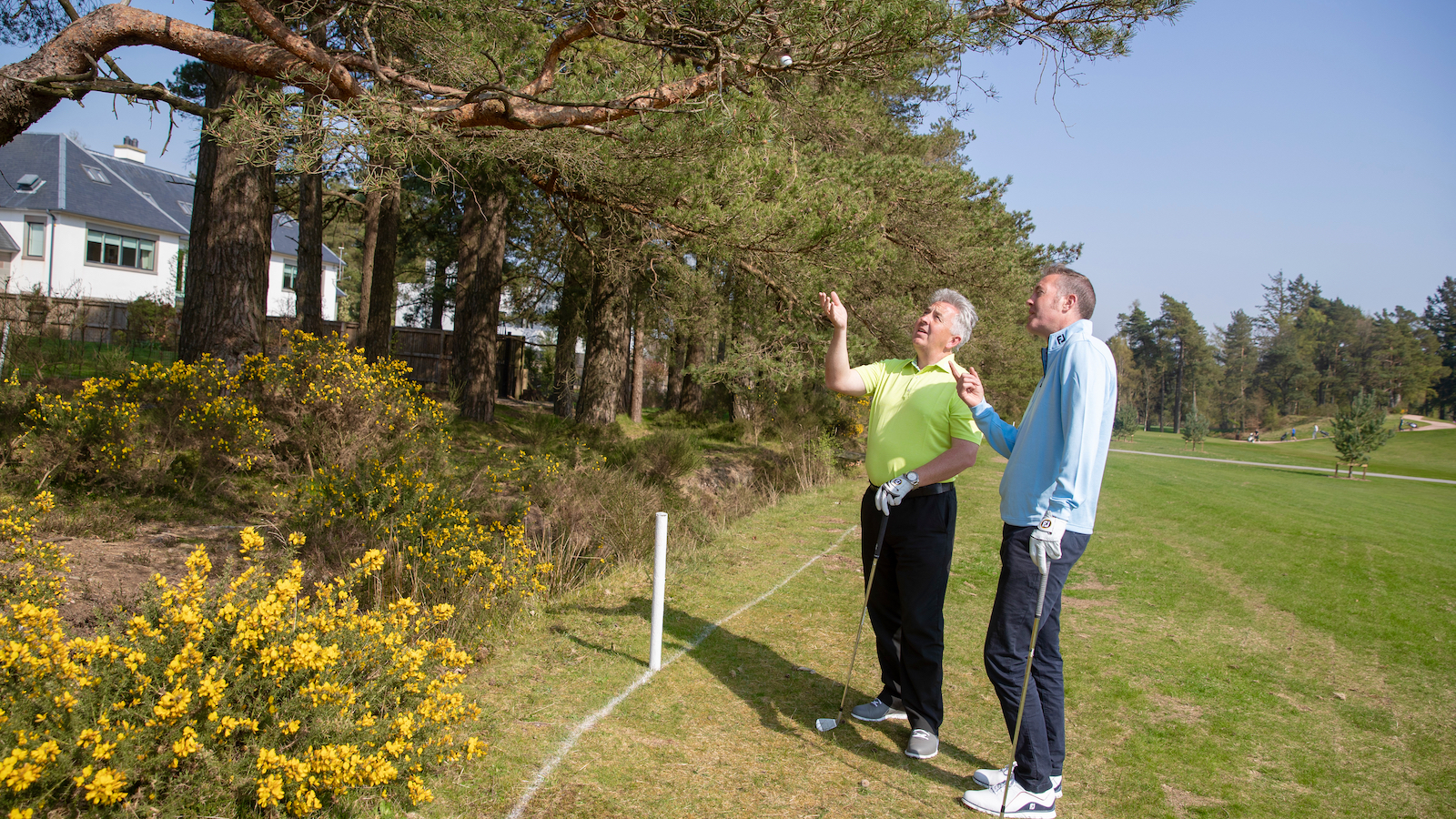
It may not happen to most golfers that often, but golf balls do sometimes decide not to fall back to earth when they clatter into a tree, and rather remain lodged in the branches or foliage potentially some way above the ground. So, what are your options when this happens?
Well, after someone has inevitably suggested that you need a ‘tree-iron’, the first thing to say is that if you are unable to positively identify a ball you see up in the branches as yours, your ball will be deemed lost and you will have to go back to where you last played from under penalty of stroke and distance.
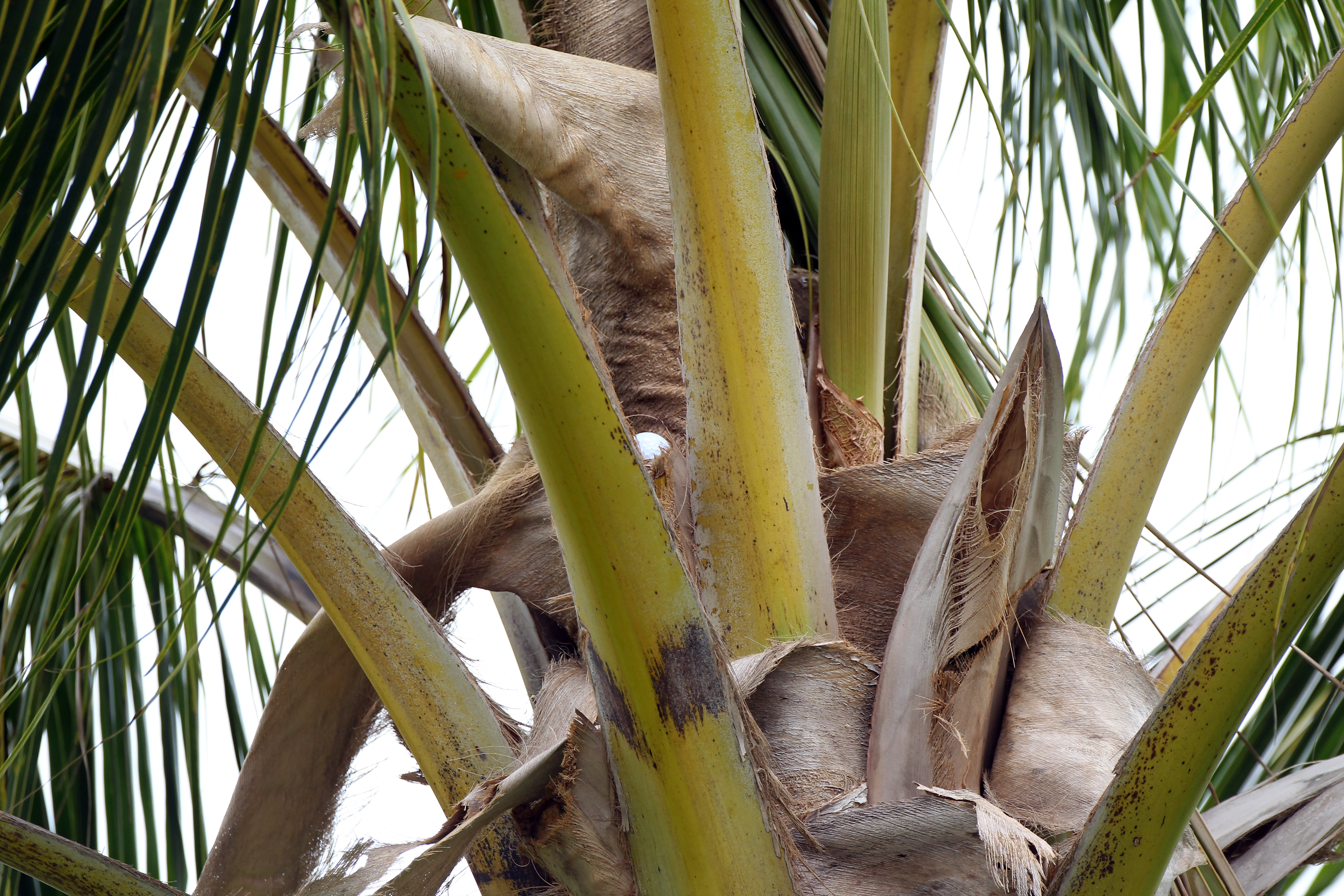
Should you decide to scale the tree, you need to be careful not to move your ball and thus incur a penalty stroke under Rule 9.4. However, clarification 9.4a/1 confirms what happens if you decide to climb the tree to try and identify a ball you believe to be yours and then move the ball in the process:
“In searching for their ball, a player sees a ball lying in a tree but cannot identify it. The player climbs the tree in an attempt to identify the ball and in doing so accidentally dislodges the ball from the tree. The ball is identified as the player's ball. In this case, since the ball was accidentally moved in taking reasonable actions to identify it, there is no penalty for moving the ball (Rule 7.4). The player must replace the ball or may directly use a relief Rule (such as Rule 19 - unplayable ball).”
Additionally, if you declare in advance that you are going to proceed under the unplayable ball Rule 19, you may then shake the tree to try and dislodge a ball you believe to be yours. That clarification goes on to say:
“A player's ball has not yet been found but is believed to be lodged in a tree in the general area. The player makes it clear that if the ball is found they will take unplayable ball relief under Rule 19. The player shakes the tree; the ball falls down and is identified by the player within three minutes of starting the search. The player may now take relief under Rule 19 (unplayable ball) adding only the one penalty stroke prescribed by that Rule with no additional penalty for causing the ball to move. If not known, the player must estimate the spot where the ball lay in the tree when applying Rule 19.
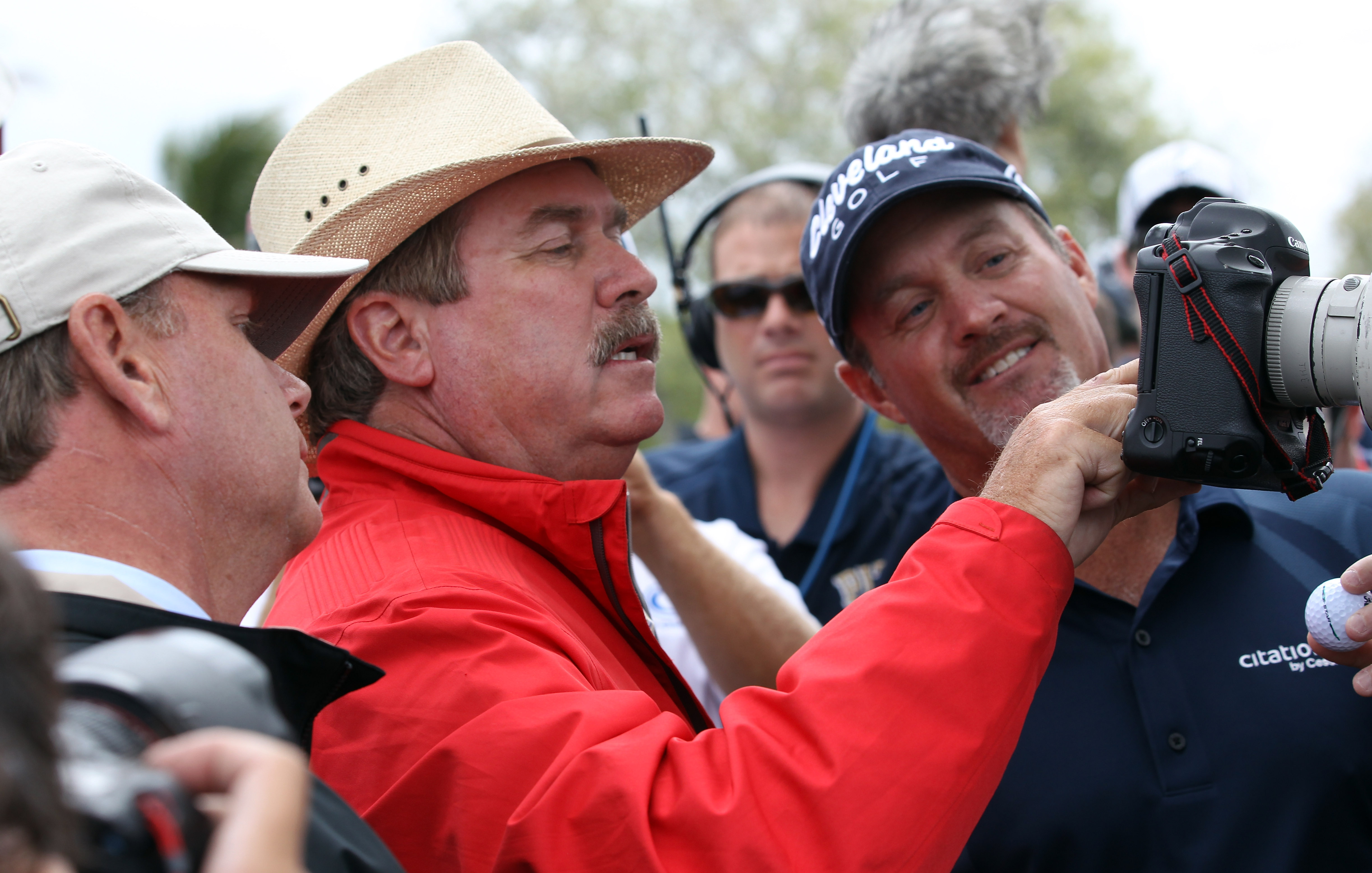
There are other means to potentially identify your ball, too. Back in the 2011 Honda Classic. Jerry Kelly was unable to see his green identification mark when looking at a ball embedded in a tree with the naked eye. He tried using binoculars, but that didn’t help, so a nearby photographer took a photo, magnified it on the camera screen and Rules officials were able to see Kelly’s identification marks on the ball. You may not have a photographer on hand, but these days, a rangefinder may just sometimes allow you to identify a ball you can’t be certain about with the naked eye.

If you can identify your ball and aren’t tempted to try and play it, what are your options? Basically, you now have the normal three penalty relief options under the unplayable ball Rule 19, with an Exception covering how to proceed if taking the lateral, two club-length drop. It's worth remembering that when taking relief in this situation, the Rules allow you to substitute a ball, so retrieving the original one is not essential (thank goodness!).
First, you can take stroke-and-distance relief by going back to the spot where you last played from and dropping a ball within one club-length of that point, no nearer the hole (option 1 in the diagram below). If returning to the tee, you can play a ball from anywhere within the teeing area. Second, you may take back-on-the-line relief by dropping a ball in a one club-length relief area (measured in any direction from the spot where the ball first strikes the line) at a point on the course that is on a direct line going straight back from the hole through the place where the ball was originally lying (option 2 in the diagram below).
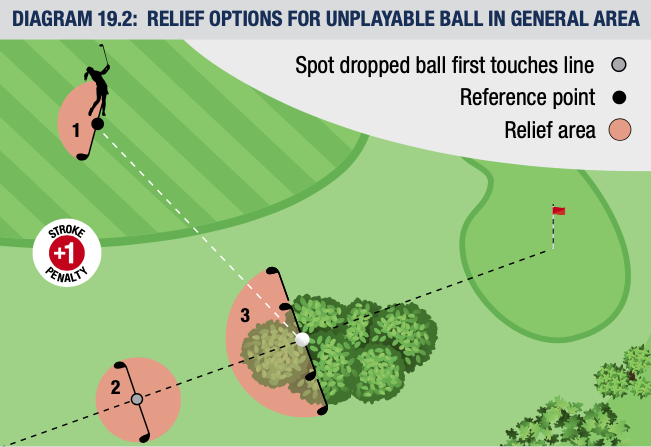
And finally, that lateral relief option. Usually, this would involve dropping a ball within two club lengths of the spot where the original ball lay. However, doing this when your ball is 20ft off the ground is not so straightforward, so the Rules make an Exception for this situation. When your ball lies above the ground, in a bush or a tree for example, you can take lateral relief by using the point on the ground directly below your ball as your reference point. You are then entitled to drop the ball within two club-lengths of that point, no closer to the hole (option 3 in the diagram above).
And yes, you do always have the option of playing the ball as it lies, too, however tricky or risky that may be. Readers of a certain vintage will recall Bernhard Langer famously scaling a tree to play his third shot to the 17th in the 1981 Benson and Hedges International at Fulford Golf Club. That hole now bears the German’s name.
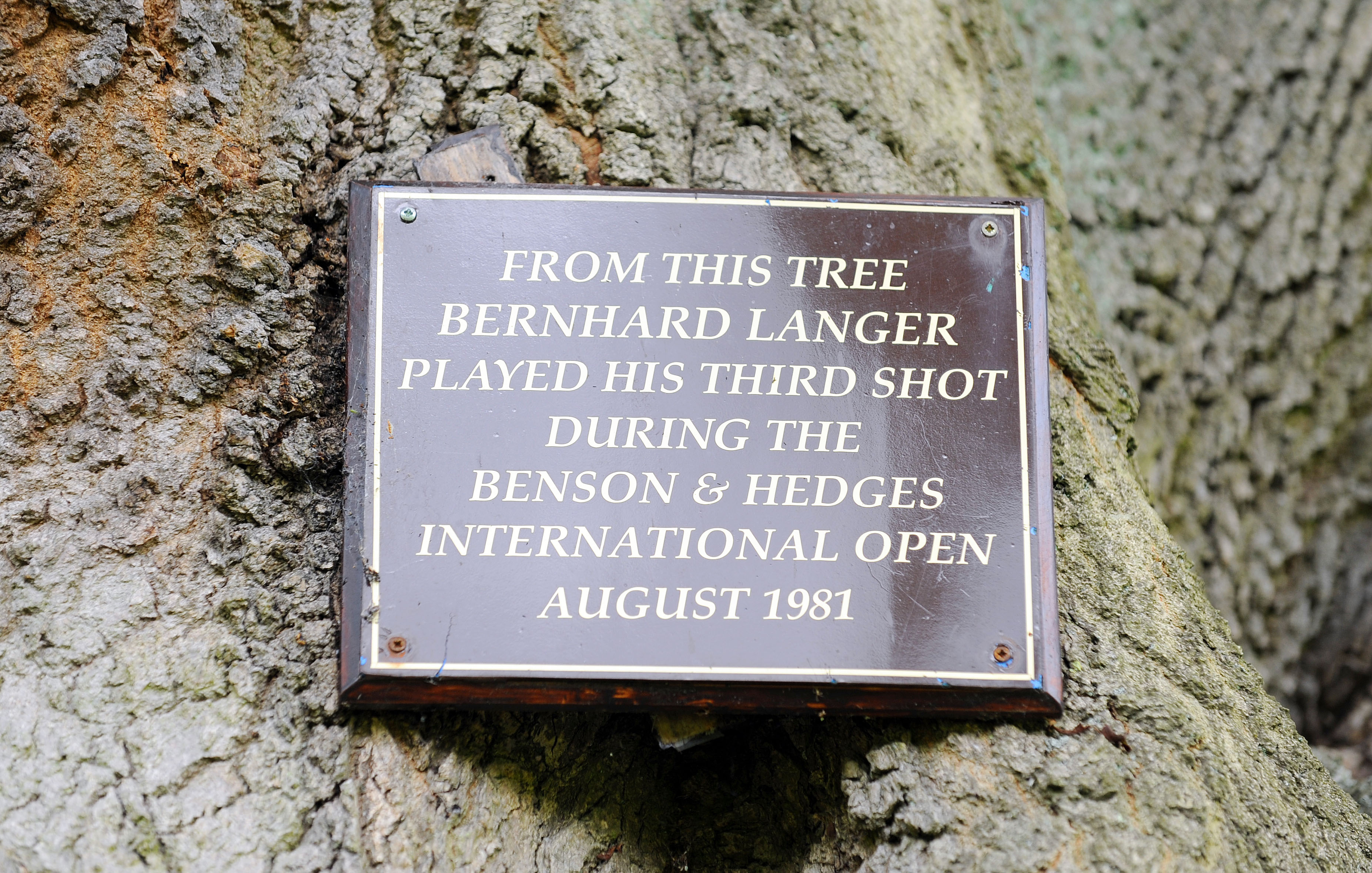
It doesn’t always go so well though. Sergio Garcia also climbed a tree on the 10th hole during the final round of the 2013 Arnold Palmer Invitational at Bay Hill. Despite playing the shot successfully out on to the fairway, Garcia injured himself in the process and decided to withdraw soon after the round was called off due to thunderstorms, to avoid hindering his preparation for The Masters.







